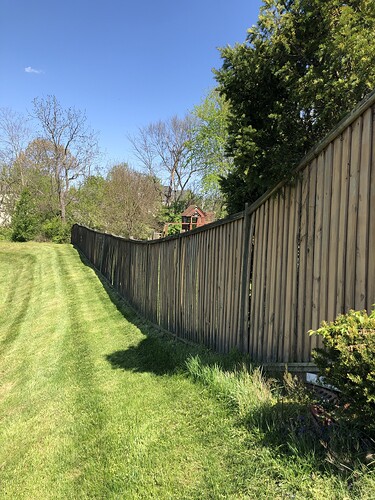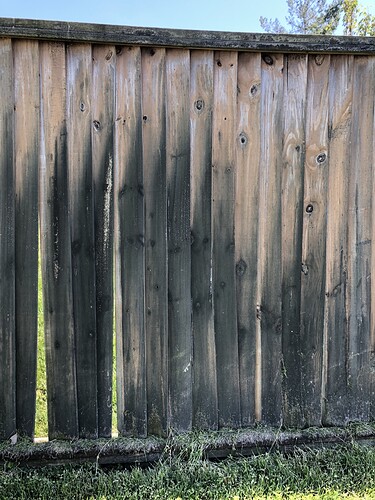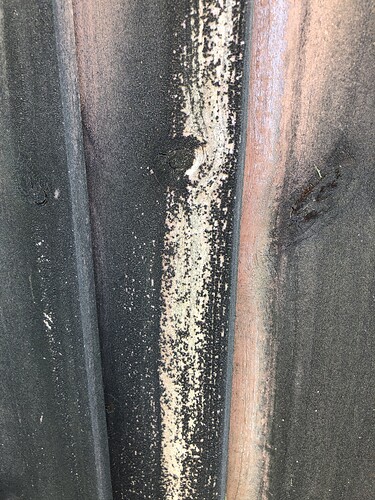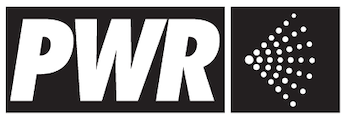Tell us how you mix that combination, I’ve never used those 2 on wood. I’m keen to try it.
3 or 4 coffee cups of flakes into a couple gallons of water, Xjet on dry wood, rinse. I’m no wood expert, but we’ve done at least a thousand of them when I did prep work for painters.
Bingo. Basically just plain old lye soap
It’s an either or type of thing. I used both interchangeably
Ok hold on. There’s a huge difference between lye soap and actual lye, aka sodium hydroxide, which is highly toxic…also great for body disposal if you’re into those mafia movies.
Sodium Hydroxide is what’s used in most strippers. Not lye soap. Actual lye or NaOH beads or flakes. It’s also used in many degreasers. It’s definitely handy to have on hand at times. You can even add it to certain degreasers to make it hotter if you have a stubborn grease spot. If you need some in a pinch you can get a small container at a big box store near the drain cleaners. It’s a lot cheaper buying it 25 or 50 pounds at a time though.
If oxalic bothers your senses I can’t wait to see what you have to say after using this one. 
Right? With this COVID floating around I need all the lung function I can get.
My guess is old SH. I wouldn’t hesitate to add a some hydroxide to the mix if it’s not breaking down at all. I have found more than once when I get a reaction (or lack of) like that that the customer (or previous owner) at some point put clear Thompson’s water seal on the fence and all that stuff is trapped under the Thompson’s. Then it Sodium Hydroxide for sure.
Thanks for the breakdown, ghost.
Would you mind elaborating a bit for a small businessman trying to get into power washing/restoring wood? I’m embarrassed to admit I’ve been in this business for a year but haven’t gotten around to learning wood.
How long do you allow a 2% SH mix to dwell on a moderately dirty wood deck? How long for acids like oxalic or citrus? Which do you prefer of the two and why? Finally, does this process change for stained vs. non-stained wood?
Thanks a ton, I’m in NJ and things are bad up here. I don’t want to turn down any work because I’m not confident in my ability to clean wood! Thanks!
Oh and do you rinse off the acids? I’ve heard some guys say they don’t, but that just doesn’t seem right to me.
Id rather pick fly crap out with tweezers at the McCormick pepper mill.
Without holding a stop watch I can’t say an exact time and ambient temps fluctuate so much here in Michigan and if your dealing with shade or non shade thats also a factor. So my average would really be a guess and a judgement call by looking at the coloring and you can feel the surface with your finger as well and tell if its ready for a rinse. The ox is 5-10 and you rinse when its looking the way you like. At the end of the day I will say wood cleaning is a bit of an art so with the basic steps known unless you go to an in person training your going to have to just go do it and you will get good.
Thanks a lot for your advice, I really appreciate it. I’m going to practice on a weathered wooden outdoor table set later today and see if I can get some good ol’ hands-on experience.
I hear that there are work restrictions right now in Michigan keeping lawn care and similar industries from working. I don’t know if that applies to power washing up there, but either way stay safe! Thanks!
just to be clear, hydroxide comes in two “flavors” sodium hydroxide or potassium hydroxide. Both are the main ingredient in just about every paint stripper on the market. Potassium hydroxide (AKA potash/caustic flakes/caustic soda) costs more, but is a little better for the envrionment. A 50 pound bag of potassium from a chemical manufacturer is about 90-100 bucks. A 45 pound bucket of sodium hydroxide is $100 on amazxon shipped to your doorstep. You can order 2 pound containers pretty cheap or go to the hardware store and get some.
You would have to talk to the chemical lady to get the offical breakdown of the difference between the two. The difference between cleaning with hydroxide and stripping with hydroxide is dwell times. cleaning roughly 10 minutes (depending on many variables), stripping 30 minutes (once again variables) and up. The mix ratio varies as well, 8 ounce a gallon or 12 ounce a gallon )or other). Does it fur, sure, (but your PW will also fur wood). I’m not a PW, but I have painted before.
There are things you can add to hydroxide to “thicken” it up into a paste, but the more you thicken it, the less it will spray. all watery chemical applications will have a tendency to run off the verticals. Especially if the surface was pre wet.
I did one similar today, not close to that size. 140 linear feet took about an hour and 20 minutes from the time I put the truck in park until I was driving home. Downstream SH and follow with PW. Get a 7 ft wand and it will really cut down on the amount of wood pulp that comes back on you, there will be plenty with that fence.
I’ll try DS but looks tougher than that. Not even sure what that black stuff is, I’m doing a ‘test run’ in a couple days to see what works best.
So, do you have a YouTube channel? If so, what is the name of it please? Thanks
Yeah I have not posted much in quite sometime now and my rig is all different but feel free to take a look at some old stuff. Soft wash science.





